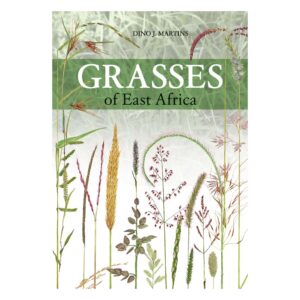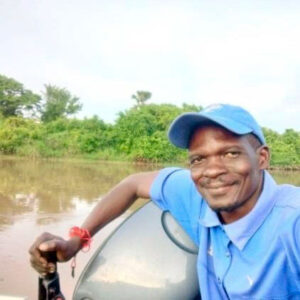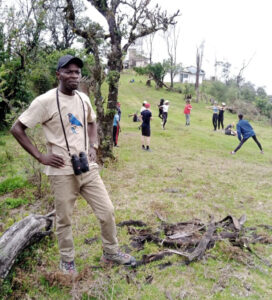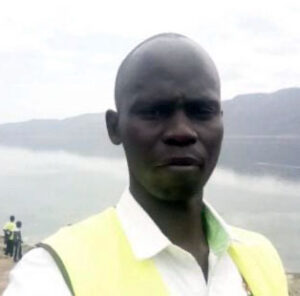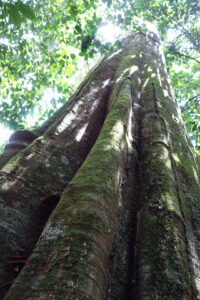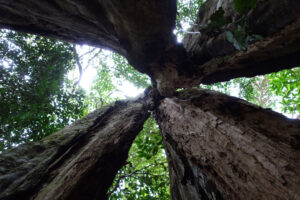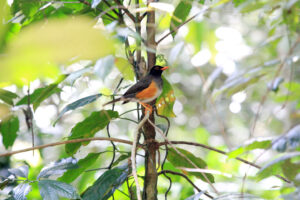After days of overcast skies in Nairobi, no one anticipated our Sunday birdwatch on 21st August, 2022 at Ngong Road Forest Sanctuary would deliver great sightings.
By 7:30 am, we had already checked in at the sanctuary. Unlike the previous few days, the sun had risen unhindered by clouds. At the sanctuary, we met Nicholas Akach, a ranger and fellow birder, who briefed us on his recent sightings in the forest. They included a white morph African Paradise Flycatcher and a White-crested Helmetshrike: an exciting line-up to inspire our birding day.
A few meters from the car park along the Commonwealth Cemetery fence, one of our participants spotted an all-white flamboyant-looking bird. As she was describing the bird to us, a white morph African Paradise Flycatcher flew past in pursuit of what appeared to be a butterfly. The flycatcher’s long dangling white tail attracted everyone’s attention.
Our list grew as birds came out in numbers to take advantage of the morning warmth. In the list were Kikuyu (Montane) White-eye, Chinspot Batis, Yellow-whiskered Greenbul, Cabanis’s Greenbul, Yellow-throated Longclaw, Three-banded Plover and others. One elusive forest specialist, the Narina Trogon, was missing, but we remained optimistic.
We manoeuvred through the forest, occasionally bending to avoid low-hanging climbers and branches. Some team members walked along the forest edge. Ooops!… Something must have been startled from high grass on the ground. It flew up and down again. Was it a bird?… a tattered trash?… No one could tell since it dragged long strap-like attachments.
We scanned through where the unusual ‘thing’ landed. Under the bush lay a bird facing us. It was a nightjar! But which one? As we debated, the bird decided to ‘clear’ our doubts! It flew out, displaying its extraordinary long wing-projections, affirming its identity as a Pennant-winged Nightjar. The bird kept dodging our camera lenses while in flight. Eventually, Matt McIlvenna managed to get a clear shot of it on the ground. It was an incredible sighting!
Nightjars are active from dusk all through the night to dawn. They spend their entire day hiding on the ground, some up on trees. Pennant-winged Nightjars breed in southern Africa, from southern Tanzania. They spend the non-breeding season to the north of us, and are occasionally seen on their way south to their breeding grounds in August.
It was a great bird walk, having bagged 48 species in our list, including the unexpected and extraordinary nightjar.

